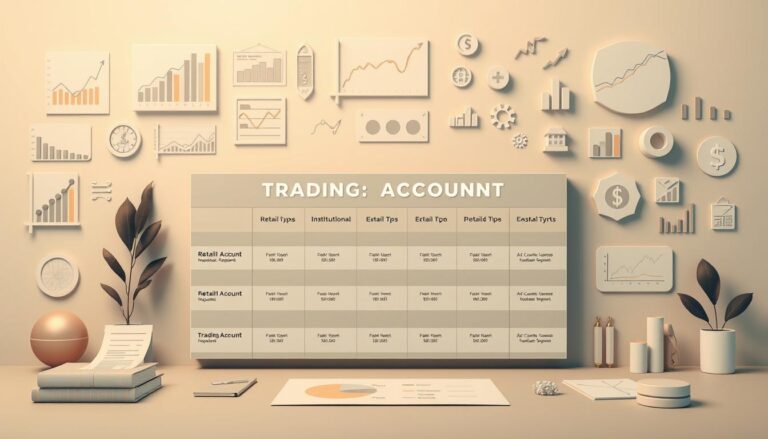Understanding Crude Oil Trading: A Comprehensive Guide
Global energy markets thrive on the movement of vital resources, and few sectors match the scale of crude oil trading. This guide breaks down how professionals and newcomers navigate this fast-paced arena. From supply chain shifts to geopolitical events, countless factors shape daily price fluctuations.
The market offers diverse opportunities but demands careful strategy. Beginners must grasp basics like futures contracts and spot prices. Seasoned traders refine approaches using technical indicators and macroeconomic trends. Both groups share one need: understanding risk management in volatile conditions.
UK participants face unique regulations and tax implications. Local brokers often provide tailored platforms for accessing international exchanges. Proper education helps avoid common pitfalls, such as overleveraging positions or misreading inventory reports.
This guide builds knowledge step-by-step. Early sections explain foundational concepts, while advanced chapters explore hedging techniques and algorithmic models. Readers learn to balance short-term trades with long-term portfolio goals.
Success here requires adaptability. Shifting production quotas, renewable energy trends, and global demand cycles all influence outcomes. With structured learning, anyone can develop skills to participate confidently in this dynamic field.
Introduction to the World of Crude Oil Trading
The once-exclusive domain of energy commodities now welcomes diverse participants, thanks to digital innovation. Modern platforms bridge gaps between institutional giants and individual traders, though complexities remain. Price movements reflect a web of factors—from production shifts to geopolitical tensions—requiring sharp analysis.
- Producers: National corporations and independent drillers
- Intermediaries: Refineries and logistics networks
- Financial players: Banks and speculative investors
Transactions range from immediate physical deliveries to multi-year contracts. Short-term deals suit urgent needs, while extended agreements stabilize budgets for manufacturers. Real-time data streams and predictive algorithms now empower decisions that once required floor traders.
Renewable energy firms increasingly sway pricing, as solar and wind projects alter long-term demand forecasts. Regional differences also matter—light sweet blends from the North Sea trade at premiums versus heavier grades. Transportation costs and refining capabilities further split values across global hubs.
Success here demands understanding these layered relationships. Tools evolve, but core principles persist: track supply chains, monitor policy shifts, and respect volatility.
Fundamental Concepts and the Oil Market Landscape

The petroleum industry operates through three interconnected stages: upstream extraction, midstream transportation, and downstream refining. These segments form a global network where supply chain efficiency directly impacts prices. Regional infrastructure disparities often create pricing gaps between producers and consumers.
Benchmarks like Brent and WTI act as global reference points for pricing. These standards help traders compare grades despite varying sulfur content and extraction costs. Financial instruments tied to these benchmarks dominate hedging strategies across continents.
Seasonal shifts heavily influence consumption patterns. Heating needs spike during colder months, while summer travel boosts fuel demand. Such cyclical changes require adaptive inventory management from refineries and distributors.
Geopolitical tensions or natural disasters can abruptly disrupt production. When major exporters face conflicts, market stability often hinges on strategic reserves. Nations like the U.S. and China maintain stockpiles to cushion against shortages.
Technological breakthroughs continue reshaping extraction capabilities. Advanced drilling methods have unlocked previously inaccessible reserves, altering long-term supply forecasts. These innovations also affect environmental policies and renewable energy investments worldwide.
Essential Terminology and Key Trading Concepts

Navigating commodity markets requires fluency in specialized language. Clear communication of supply and demand dynamics separates informed decisions from guesswork. This section decodes critical terms while explaining their practical market impacts.
Understanding Supply and Demand Dynamics
Market prices hinge on the balance between availability and consumption. Key supply factors include:
- Production capacities of major exporters
- Geopolitical stability in extraction zones
- Strategic inventory reserves
On the demand side, economic growth patterns and seasonal energy needs drive consumption. Renewable adoption rates now steadily influence long-term projections. Sudden supply shocks cause sharper price swings than gradual demand shifts.
Core Terms: Futures, Options, and Contracts
Standardized agreements form the backbone of modern markets. Futures contracts lock in prices for future delivery dates, helping producers hedge against volatility. Key specifications include:
- Contract sizes (e.g., 1,000 barrels)
- Monthly expiration cycles
- Settlement methods (cash vs physical)
Options contracts offer purchase/sale rights without obligations. Traders use them to limit downside risks during uncertain periods. Understanding contango (futures priced above spot) and backwardation (futures below spot) reveals market expectations.
Mastering these terms enables informed decisions when interpreting refinery reports or OPEC announcements. Always cross-reference contract details with real-time pricing data.
Mastering “crude oil trading” Strategies

Effective energy market strategies balance technical insights, macroeconomic trends, and disciplined risk protocols. Professionals often blend chart patterns with real-time supply shifts to spot opportunities. For example, moving averages might signal entry points, while inventory reports validate broader trends.
Technical methods analyze historical patterns through tools like Fibonacci retracements or RSI indicators. These help identify support levels where buyers might re-enter markets. However, sudden geopolitical events can override chart signals, requiring quick adjustments.
Fundamental approaches assess production quotas, refinery outputs, and global demand cycles. A surge in electric vehicle adoption, for instance, might prompt long-term portfolio shifts. Traders combine these perspectives with strict stop-loss orders to limit downside risks.
Popular tactics include:
- Trend riding: Holding positions during sustained upward/downward movements
- Spread plays: Capitalizing on price gaps between related contracts
- Contrarian bets: Targeting reversals when markets overreact to news
High-frequency methods demand advanced algorithms, while renewable energy transitions influence multi-year investment plans. Successful participants continuously adapt as drilling innovations and policy changes reshape the landscape.
Getting Started: Setting Up Your Trading Account and Platforms
Entering the energy markets begins with establishing a secure foundation through regulated platforms. UK-based participants must prioritize Financial Conduct Authority (FCA)-authorized brokers to ensure compliance and investor protection. This step minimizes risks associated with unregulated entities while granting access to reliable trading instruments.
Choosing Platforms Authorized by UK Regulators
Reputable companies like IG Markets Ltd (FCA Register 195355) and Saxo Capital Markets (FCA Reference 551422) offer FCA-monitored services. These platforms provide multiple account types tailored to experience levels, from beginners to professionals. Identity verification and capital requirement assessments form the initial way to activate accounts securely.
Familiarizing with Trading Instruments and Data Sources
Authorized brokers supply diverse tools like CFDs, spread bets, and ETFs tracking price movements. Real-time data feeds and economic calendars help traders spot patterns and news impacts. Key considerations include:
- Margin requirements for leveraged positions
- Fee structures across different contract types
- Settlement procedures for physical vs cash agreements
Educational resources on these platforms demystify complex strategies. Novices should start with demo accounts before committing funds. Regular reviews of platform capabilities ensure alignment with evolving company offerings and market conditions.
Advanced Trading Instruments: Futures, ETFs, and Spread Bets

Traders seeking advanced exposure to energy markets often turn to specialized financial instruments. These tools cater to diverse goals, from precise speculation to long-term portfolio diversification. Three standout options dominate modern strategies: futures, ETFs, and spread bets.
Futures contracts serve as the backbone of institutional activity. Platforms like NYMEX, part of the CME Group, standardize agreements for delivery dates and quantities. Most participants close positions before expiration, avoiding physical handling while capitalizing on price shifts. Margin requirements and daily settlements demand disciplined capital management.
ETFs simplify access for retail investors. These funds track prices through futures holdings or energy company stocks. Some use derivatives to mirror market movements without direct commodity ownership. Management fees vary, making cost comparisons essential when selecting products.
Spread betting stands out in jurisdictions like the UK, where tax advantages attract active speculators. This method lets traders profit from upward or downward price predictions without owning the asset. Leverage amplifies potential gains but requires strict risk controls.
Each instrument carries distinct advantages. Futures offer direct price exposure, ETFs provide diversification, and spread bets enable flexible speculation. Understanding commission structures, financing costs, and settlement rules separates sustainable strategies from impulsive bets.
Risk Management and Leverage in Oil Trading

Navigating volatile markets demands strict protocols to protect capital. Leverage acts as a double-edged sword, magnifying gains but accelerating losses when prices shift unexpectedly. Over 69% of retail accounts lose funds when using instruments like CFDs, according to UK regulatory data.
Understanding Leverage and Margin Risks
Leverage ratios determine how much exposure traders gain relative to their deposited funds. A 10:1 ratio means every £1 controls £10 worth of positions. However, margin calls occur if account equity drops below required levels, forcing immediate deposits or position closures.
Spread bets and futures require constant monitoring during geopolitical crises or inventory shocks. These events can trigger rapid price gaps, bypassing stop-loss orders. Maintaining cash reserves helps avoid forced liquidations at unfavorable rates.
Strategies to Mitigate High-Risk Scenarios
Successful traders prioritize preservation through:
- Position sizing (1-2% of capital per trade)
- Diversification across time frames and asset classes
- Automated stop-loss triggers updated weekly
Psychological discipline separates professionals from impulsive participants. Accepting small losses prevents emotional decisions during downtrends. Stress-testing portfolios against historical crashes also builds resilience against black swan events.
Market Analysis: Factors Influencing Oil Prices and Market Trends
Multiple forces shape the trajectory of energy markets daily. Economic growth rates act as primary drivers, with rising GDP signaling higher fuel consumption. Manufacturing activity and employment figures offer early clues about demand shifts. A strong economy often correlates with upward pressure on prices, while recessions trigger oversupply concerns.
Geopolitical risks create sudden volatility. Conflicts in key production zones or sanctions against exporters disrupt supply chains instantly. These events force traders to reassess inventory levels and alternative sources. Diplomatic resolutions can reverse trends just as quickly.
Weather patterns influence both extraction and consumption. Hurricanes halt offshore drilling operations, tightening supply. Unusually cold winters boost heating needs, while summer travel spikes gasoline use. Advanced forecasting tools help anticipate these seasonal market swings.
Central bank policies indirectly steer prices through currency valuations and inflation targets. When the Bank of England raises interest rates, a stronger pound may lower import costs temporarily. Conversely, expansionary monetary policies often stimulate industrial activity, lifting long-term demand.
Technological breakthroughs alter the landscape over time. Efficient extraction methods increase output, while renewable energy adoption reshapes consumption patterns. Traders monitor patent filings and R&D investments to spot emerging trends.
Speculative activity amplifies short-term movements. Algorithmic systems react to headlines faster than human analysts, creating rapid price gaps. Disciplined participants use technical analysis to distinguish noise from sustainable trends across global markets.
Incorporating Data, News, and Regulatory Updates
Staying ahead in fast-paced markets hinges on timely insights. Modern platforms integrate live metrics with regulatory alerts, creating actionable intelligence streams. UK traders prioritize FCA-compliant tools to align decisions with regional compliance standards.
Utilizing Real-Time Data and Market News
Live data feeds track price movements, inventory shifts, and economic indicators. Services like Reuters Eikon or Bloomberg Terminal offer refinery outputs and geopolitical updates. These tools help spot patterns before broader market activity reflects changes.
Breaking alerts on OPEC meetings or pipeline disruptions allow quick adjustments. For example, hurricane forecasts might prompt position reductions in Gulf Coast-linked contracts. Traders cross-reference API reports with technical charts to confirm trends.
UK participants monitor FCA guidelines on leverage limits and disclosure rules. Automated alerts flag policy changes affecting energy derivatives. Combining these elements builds resilient strategies suited for today’s dynamic markets.






